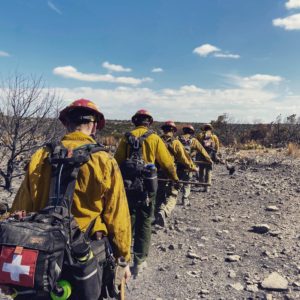Wildfire potential reduced statewide with recent rainfall
Moist environment expected to continue for much of Texas
Recent rainfall observed across most of the state has significantly reduced wildfire activity and the potential for large fire growth.
Over the past two weeks, rainfall across the state has significantly reduced wildfire potential. A moist fire environment is expected to continue the trend of low fire activity across the majority of the state.
There is a low potential for wildfire activity Sept. 10-11 in portions of the Trans Pecos where rainfall has been scattered. There is a possibility for scattered thunderstorms through Sept. 11 in this same region, where lightning could ignite fires in dry fuels and cured grasses.
Any wildfires that do start are expected to spread slowly, as cool temperatures, low wind speed and elevated relative humidity do not produce a conducive fire environment for large fire growth.
For current conditions and wildfire outlook, check out the Texas Fire Potential Outlook.
Fire activity
Since the beginning of September, state and local resources have responded to 31 fires that have burned 2,052 acres. Many of the recent wildfire starts have been attributed to human activities—such as equipment use and debris burning—and are preventable.
So far in 2020, 541 wildfires that have burned 51,637 acres were the result of equipment use—such as welding and tractors or other heavy equipment. This includes three fires that have burned 285 acres so far in September.
Aviation resources continue to assist ground crews with water and retardant drops to slow forward progression of fires and douse hotspots across fire areas. Fire suppression aircraft have logged approximately 75 hours of flight time over the past week.
Efforts involved dropping 3,312 gallons of water and 9,019 gallons of retardant on multiple fires including the Smith Canyon Fire in Pecos County, which burned 11,348 acres and is 100% contained, and the Sotol Mitchell Fire in Pecos County, which burned 69 acres and is 100% contained.
Aviation resources currently staged in state include one Type 3 helicopter, three single engine air tankers, and one air attack platform.
Since Jan. 1, state and local resources have responded to 4,462 fires that have burned a total of 231,582 acres. So far this year, Aviation resources have flown 2,298 hours, dropping 2,307,821 gallons of water and retardant on Texas wildfires.
Due to significant fire activity occurring in multiple geographic areas across the country and heavy commitment of shared resources to large fires nationally, the National Multi Agency Coordinating Group has raised the National Preparedness Level to Level 5.
Preparedness levels are dictated by fuel and weather conditions, fire activity and fire suppression resource availability throughout the country. Level 5 is the highest level of wildland fire activity and indicates heavy resource commitment to fires nationally. The state of Texas is currently at a level three with increased resource commitment and wildfire activity statewide.
In addition to wildfire response across the state, Texas A&M Forest Service personnel are currently assisting with Hurricane Laura response efforts. Twenty-three personnel are providing planning and logistical support for recovery operations to Texas Division of Emergency Management.
If a wildfire is spotted, immediately contact local authorities. A quick response can help save lives and property.
For frequent wildfire and incident updates, follow the Texas A&M Forest Service incident information Twitter account.
Prevention and Mitigation
Any spark can cause a wildfire. Hot work—such as welding and grinding—can easily ignite fires in or near your work area. Taking a few extra minutes to prepare your work area prior to welding or grinding can reduce the potential for ignition of these fires and having a spotter or fire watch can help prevent sparks from becoming wildfires.
When welding, grinding or cutting metal outdoors, follow these precautions to reduce the threat of accidentally starting a wildfire:
- Remove vegetation and other flammable materials from your work area.
- Wet the ground around your work area prior to creating any sparks.
- Assign someone as a fire watch.
- Keep water and a fire extinguisher nearby.
- Place a welding or fire blanket under your work area to catch sparks.
- Avoid parking vehicles in dry grass tall enough to touch the vehicle’s exhaust or the underside of the vehicle.
- Avoid welding during Red Flag conditions or on windy days.
Residents should pay attention to county burn bans and avoid all outdoor burning until conditions improve. Burn ban information can be found by contacting local fire departments or by visiting Texas Burn Bans.
For media resources, including public service announcements, posters and audio and video files, visit TFS Media Resources.



